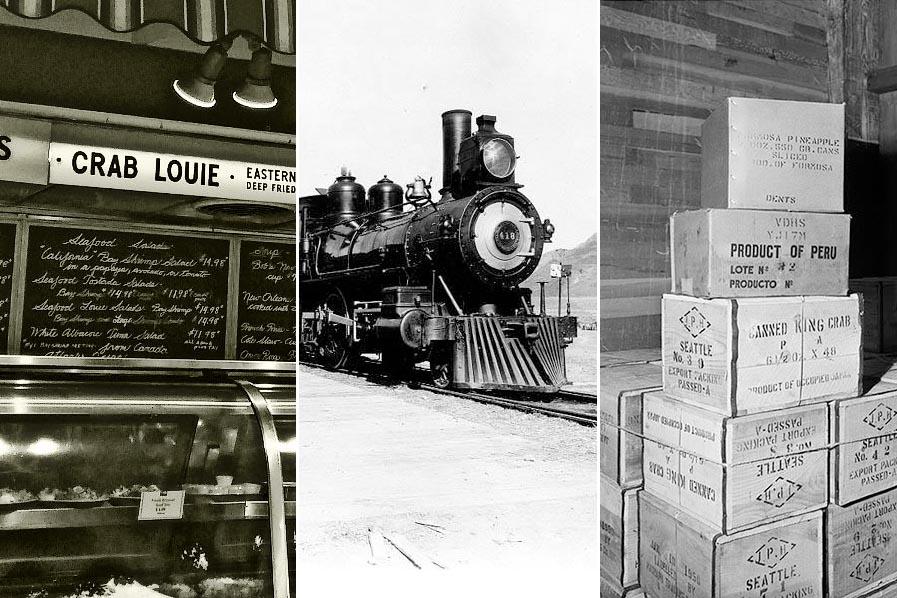Podcast | What a salad can tell us about PNW’s complicated past
No one really knows who made the first Crab Louis, but some sleuthing reveals an origin spurred by the Gold Rush and railroads.

From left: Deli menu featuring "Crab Louie"; Transcontinental Railroad engine in Livingston, Mont.; Crabs for sale in Pacific County, Wash. (Karen/Flickr, University of Washington, Washington State Historical Society)
Crab has been a part of the culture of what we now call the Pacific Northwest for a very long time. But how the people of this region eat that crab has changed over the years and those changes can tell a lot.
Take Crab Louis, for instance. As a dish it is fairly simple: some crab, some vegetables, some red sauce. Yet the story of Crab Louis is one of western colonial expansion that brought with it new agricultural practices and norms.
Subscribe to Mossback on Apple Podcasts, Spotify, Amazon, or Podbean.
It is a history that host Knute Berger touched on in a recent episode of his Mossback’s Northwest video series, but there is much more to the story.
For this episode of the Mossback podcast, Berger and co-host Sara Bernard talk about how the gold rush and railroads changed cuisine in the Pacific Northwest and how tracking down the origins of a recipe is a lot like searching for the origins of folklore. Plus, Knute shares what it was like to lunch on crab with Anthony Bourdain.
Before listening, we suggest you watch the original Mossback's Northwest episode about Crab Louis here.


